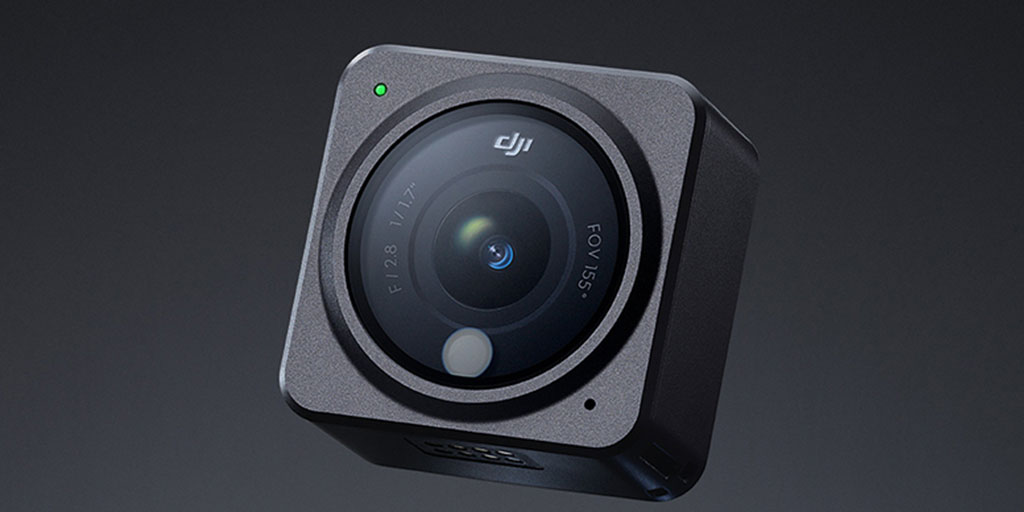DJI Osmo Nano

What we know so far
- Expected Release Date: August 2025
- Price Estimate: $349–$399 USD
- Sensor: 1/1.3-inch CMOS
- Video Performance: Up to 4K at 120fps
- Stabilization: Electronic image stabilization (likely RockSteady or HorizonSteady)
- Design: Modular (detachable camera and display modules)
- Mounting: Magnetic mounting system for wearables and accessories
- Ideal For: Content creators, vloggers, outdoor adventurers, action sports athletes
Introducing the DJI Osmo Nano
DJI appears ready to challenge the boundaries of compact camera design with the upcoming DJI Osmo Nano. Leaked details and recent FCC filings suggest the Nano will be the company’s most ambitious attempt yet at combining high-end imaging features with an ultra-portable form factor. Its defining innovation? A modular architecture that separates the camera and display into magnetically attached units.
The Nano emerges not simply as a continuation of DJI’s Osmo lineup but as a potentially disruptive new category within the action cam ecosystem. As competitors like GoPro and Insta360 double down on all-in-one designs, DJI is betting on flexibility, wearability, and minimalism.
A Closer Look at Modular Functionality
According to FCC documents, the DJI Osmo Nano features two registered components: the ON001 camera module and OD001 display module. These likely connect via a magnetic system, offering interchangeable setups for creators on the move. This opens up versatile shooting configurations previously limited to much bulkier rigs.
Users might, for instance, attach the lightweight camera module to a helmet or chest mount while keeping the screen tethered for monitoring and control. For drone pilots, a stripped-down camera unit could reduce payload while still capturing stabilized 4K footage.
This level of functional separation between capture and control could mark a turning point in how compact cameras are designed and used.
What's Under the Hood?
While DJI has not released full specifications, current leaks suggest the Osmo Nano will ship with a 1/1.3-inch CMOS sensor, capable of capturing 4K video at up to 120 frames per second. That would place it squarely within the upper tier of the action camera segment.
Electronic image stabilization, likely RockSteady or HorizonSteady, is expected to feature prominently, providing smooth footage even during high-impact activities. Combined with the large sensor, this could give the Osmo Nano an edge in low-light and dynamic lighting scenarios.
Additionally, DJI's reputation for optimized image pipelines and color science suggests the Nano may outperform similarly priced rivals in image clarity and tone.
Practicality Meets Portability
Another standout aspect of the Osmo Nano is its emphasis on real-world use. The camera’s magnetic mounting system implies a level of convenience that traditional screw-mount action cams simply can't match. For athletes, vloggers, and travel shooters, fewer mounting hassles mean faster transitions and fewer missed shots.
The display module, rumored to be detachable, adds even more flexibility. Whether used as a live view monitor or playback screen, this design could eliminate the need to awkwardly frame shots from a fixed rear touchscreen.
Together, these elements signal DJI's attempt to reengineer the shooting experience for a new era of mobility and modularity.
Pricing, Positioning, and Market Impact
Sources close to the matter indicate a target price of $349 to $399, placing the Osmo Nano in direct competition with the GoPro HERO12 Black and Insta360 GO 3. What differentiates the Nano is its scalability: users can expand their setup with modular accessories over time, rather than committing upfront to a single, fixed device.
In doing so, DJI is tapping into a growing appetite for customizable content tools that adapt to individual creators' workflows.
The Osmo Nano also underscores DJI's broader product strategy. With recent launches in drones, gimbals, and pocket cameras, the company is assembling an ecosystem designed to capture every creative angle—and the Nano fits squarely into that vision.
Target Users
✔ Sports Enthusiasts: Lightweight, highly mountable, and durable—ideal for high-speed and hands-free recording.
✔ Travel Vloggers & YouTubers: Compact enough for pockets, powerful enough for pro-level footage.
✔ Drone Filmmakers: A perfect secondary camera for aerial setups, especially when weight savings are critical.
✔ DIY Content Creators: Modular build supports unique workflows, custom angles, and mobile editing.
Projected Launch Timeline
While DJI has yet to formally confirm the DJI Osmo Nano, regulatory activity and industry chatter suggest a likely unveiling by August 2025. Barring delays, availability could follow swiftly, with retail bundles and accessories launching alongside the core unit.
Expect official teasers or event invites to emerge during mid-to-late summer.
Final Verdict
The DJI Osmo Nano isn’t just another GoPro competitor—it’s an entirely new take on what an action camera can be. With its smart modularity, 4K performance, wearable design, and aggressive price point, DJI is clearly aiming to lead—not follow—the next wave of portable video creation.
Stay tuned for more updates as we get closer to launch. But if the leaks are accurate, the Osmo Nano could be 2025’s most exciting camera release.
Disclaimer: This article discusses a newly leaked product. The DJI Osmo Nano has not been officially announced by DJI. All information presented here is based on reputable leaks, FCC filings, and industry sources as of May 2025.
FAQ
What is the DJI Osmo Nano?
DJI's rumored modular action camera offering compact 4K video, wearable design, and real-time monitoring.
When will the DJI Osmo Nano be released?
Expected in late summer 2025, possibly August, based on FCC filings.
What are DJI Osmo Nano camera specs?
A 1/1.3-inch CMOS sensor with 4K 120fps recording and DJI's signature stabilization.
How much will it cost?
Price is estimated between $349 and $399, depending on configuration.
How DJI Osmo Nano compares to GoPro and Insta360?
It offers competitive video quality with added modularity and wearability that competitors currently lack.